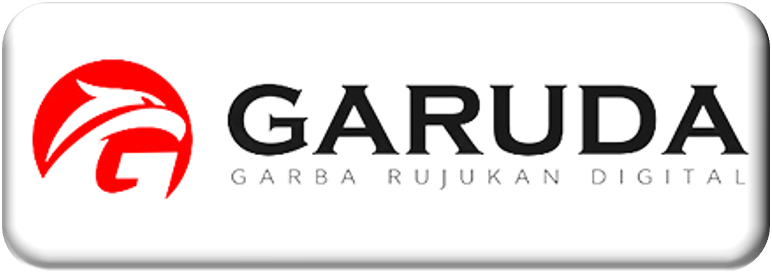Author Guideline
Author Guideline
General Terms of Publication
- Your article
1. Preparing Your Paper
All authors submitting to Analis Kesehatan Sains should confirm to the Uniform Requirements for Manuscripts Submitted to Analis Kesehatan Sains Journals. The manuscripts submitted to Analis Kesehatan Sains should be written in English.
Articles that have been published previously in another language, or in a journal that is not widely available, may be submitted for consideration provided the editor of the source journal and the copyright older give written approval and the origin of the article is declared in the manuscript. A copy of the original article and appropriate approvals must be included with the submitted manuscript.
2. Word Limits
Please include a word count for your paper. Although there is no page limit for a Regular Paper, it is strongly suggested that a complete manuscript should normally be between 4000-5000 words.
3. Manuscript Format
All manuscript format is MS word. Please use academic English style consistently throughout your manuscript. Figures (illustrations) and tables should be put separately from the text. Each manuscript should be typed double-spaced on A4 (8.5” x 11”) paper size with 1 inch margins. Articles should be written using Microsoft Word, font size 10, Times New Roman.
4. Subscription details
Frequency: 2 issues per year
Subscription period: one year
Subscription type: Individual/Institutional/Industry
B. Before submitting
1. Approval
Ensure all authors have seen and approved the final version of the article prior to submission. All authors must also approve the journal you are submitting to.
2. Publication Charges
There are no submission fees, publication fees or page charged for this journal.
C. Uploading your submission
1. Cover letter
A cover letter must be included with each manuscript submission. This letter should introduce your paper and outline why your work is important and suitable publication at this time.
2. Copy Right Form
Fill out this form to confirm that neither the manuscript nor any parts of its content are currently under consideration or published in another journal. All author signs the form and send it together with cover letter and manuscript.
3. Manuscript with following guidelines:
a. Author list
All authors must be listed on the title page and entered on the Manuscripts submission in the correct order. Ensure all author email addresses provided are valid.
b. File formats
Ensure all files are in the correct format for revised submissions. See ‘Preparation of Manuscripts’ for further instructions
c. Figure and tables
Ensure all figures and table files are present and correct.
Organization of Manuscripts
Your paper should be compiled in the following order:
1. Title page
Title page should contain the title of the paper in bold face, title case (font size 14), names of the authors in normal face, upper case (font size 12) followed by address in normal face lower case. The author to whom all correspondence addressed should be denoted by an asterisk mark. The title should be as short as possible and precisely indicate the nature of the work in the communication. Names of the authors should appear as initials followed by surnames. At the bottom of the left corner of the title page, please mention “*Address For correspondence” and provide a functional e-mail address. The address of the corresponding author to whom all correspondence may be sent should be given only if it is different from the address already given under authors’ names.
The title should accurately, clearly, and concisely reflect the emphasis and content of the paper. The title must be brief and grammatically correct. The titles should not normally include numbers, acronyms, abbreviations or punctuation. They should include sufficient detail for indexing purposes but please be general enough for readers outside the field to appreciate what the paper is about. Avoid specialist abbreviations if possible. Titles are no more than 10–12 words.
2. Abstract
Abstract briefly reflects the background or objective(s) of the study, its principal results (it should emphasize new and important aspect of the study or observations), and its conclusions. Explain how the study was done (materials and methods used), including any model organisms used, observational and analytical methods, without methodological detail. Do not include abbreviations and citations. The abstract contains of 200-250 words. Avoid specialist abbreviations.
- Abbreviations should be defined in parentheses the first time they appear in the abstract, main text, and in figure or table captions and used consistently thereafter.
- SI Units (International System of Units) should be used. Imperial, US customary and other units should be converted to SI units whenever possible.
- Accession numbers of RNA, DNA and protein sequences used in the manuscript should be provided in the Materials and Methods section. Also see the section on Deposition of Sequences and of Expression Data.
- Keywords
Three to five keywords after abstract. Read making your article more discoverable, including information on choosing a title and search engine optimization.
4. Main text introduction
A short introduction of the research problem followed by a brief review of literature and objective of the research and highlight why it is important. It should define the purpose of the work and its significance, including specific hypotheses being tested. - Materials and methods
Describe the materials used in the experiment, year of the experimentation, enough details that a competent researcher could repeat your experiment. The materials and method should not be listed separately. For commercial sources of used materials, the name of the company, and the town and country in which they are located should be indicated.
Methods already published should be indicated by a reference, with only the relevant modifications described here. e.g., “… The method was referring to centrifugation at room temperature; we modified it (9) for the protection of fragile DNA pellet during further extraction steps….”. Submission of sequence data to databases: Novel nucleotide or protein sequence data must be deposited in the GeneBank, EMBL or DDBJ databases and an accession number obtained before the paper could be accepted for publication.
Methods sections describing research using human or animal subjects and/or tissue or field sampling must include required ethics statements. Methods sections describing research using cell lines must state the origin of the cell lines used. Specify the computer software used.
In general, Analis Kesehatan Sains adheres to the International System of Units (SI) for how units of measurements are written. Use SI symbols, give concentrations in mol/L and define the term % as w/v or v/v for all solutions. For international units use IU (U should be used for enzyme activity). Describe statistical methods with enough detail to enable a knowledgeable reader with access to the original data to verify the reported results. Specify the type of equipment (microscopes/objective lenses, cameras, detectors) used to obtain images. When possible, quantify findings and present them with appropriate indicators of measurement error or uncertainty (such as confidence intervals).
Abbreviations should be defined fully only at first mention and used consistently thereafter. Species name is writing in italics (e.g., Helicobacter phylori). Scientific name with the authority should be given in the title and the first time the species is mention in the text. Thereafter, either the vernacular of common name of the species or the shortened scientific name (e.g., M. tuberculosis, M. leprae) can be used, but not a mixture of both).
Ethics of Human and Animal Experimentation
Human Subject Research
The Author should ensure that studies involving experiments on humans must have institutional review board (IRB) and/or national research ethics committee approval. Manuscripts should include a statement that the informed consent was obtained for experimentation with human subjects and that it conforms to standards currently applied in the country of origin. The certificate of ethical research should be attached. The name of the authorizing body should be stated in the paper. The privacy rights of human subjects must always be observed.
Animal Research
The Author should ensure that studies involving experiments on animals must include a statement in the manuscript indicating that the international, national, and/or institutional guide lines for the care and use of animals have been followed, and that the study has been approved by a research ethics committee. Procedures should be such that experimental animals do not have to suffer unnecessarily. Papers should include details of the procedures and of anesthetics used.
A fully informed written consent which should be documented in the paper.
All individuals have individual rights that are not to be infringed. Individual participants in studies have the right to decide what happens to the identifiable data gathered from them during a study. Hence, it is important that all participants gave their informed consent in writing prior to inclusion in the study. The manuscripts that include information about participants, written informed consent for the publication of these must be obtained from all the participants.
7. Results
This part focus on the fulfillment of stated objectives as given in the introduction. It should contain the findings presented in the form of figures and figures. Provide a concise and precise description of the experimental results, their interpretation as well as the experimental conclusions that can be drawn.
Figures
- A figure is any type of illustration other than a table (chart, graph, photograph, or drawing).
- Figures should be high quality (12000 dpi for line art, 600 dpi for grayscale and 300 dpi for color, at the correct size).
- Figures should be supplied in osne of our preferred file formats: JPEG, JPG or PNG. The aim of the figure legend should be to describe the key messages of the figure, but the figure should also be discussed in the text.
- Number figures in the order they are first mentioned in text. Do not write “the figure above” or “the figure below.”
- Each legend should have a concise title of no more than 15 words. The legend itself should be succinct, while still explaining all symbols and abbreviations. Avoid lengthy descriptions of methods. Put the legend inside the figure box, preferably above or to the right of the figure.
- The style of the graphs and charts and the size and appearance of letters and numbers should be consistent within a paper.
- Do not draw a box around line-art figures. Multipanel figures should be labeled (lowercase a, b, c, etc.) and combined into one file.
- The graphic elements: Do not crowd the interval marks on axis scales. Legend includes identify symbols, lines, and patterns. Put the legend inside the figure box, preferably above or to the right of the figure.
Tables
- Tables should present new information rather than duplicating what is in the text. Regarded should be able to interpret table without reference to the text. Print screen is not allowed.
- Use Table’s title with sentence-style capitalization (only the first word has an initial capital). Use only lowercase for legends and for units of measure. Define all abbreviations in the caption, even if they appear in the overall abbreviations list
- Number tables in the order they are first mentioned in text. Do not write “the table above” or “the table below.”
- Always use Microsoft Word's table feature. DO NOT create tables by using the space bar and/or tab keys. Do not submit tables in Microsoft Excel.
- Do not use the enter key within the body of the table. Instead, separate data horizontally with a new row.
- Do not insert blank columns or rows.
- Asterisks or letters next to values indicating statistical significance should appear in the same cell as the value, not an adjacent cell (i.e., they should not have their own column).
- Discussions
This section should present comprehensive analysis of the results in the light of any previous research. Discussion may also be combined with results. Do notrepeat in detail data or any material given in the Introduction or the Results section. The Discussion should spell out the major conclusions and interpretations of the work including some explanation on the significance of these conclusions. How do the conclusions affect the existing assumptions and models in the field? How can future research build on these observations? What are the key experiments that must be done? The Discussion should be concise and tightly argued.
9. Conclusions
Conclusion section should bring out the significance of your research paper, show how you’ve brought closure to the research problem, and point out remaining gaps in knowledge by suggesting issues for further research.
10. Acknowledgments
The authors should first acknowledge the source of funding for the research presented in their article followed by any personal credits.
11. Declaration of interest statement
All authors of submitting manuscript to the journal must disclose any and all conflicts of interest they may have with publication of the manuscript that is mentioned in the manuscript.
12. References
References should include only articles that are published or in press. Analis Kesehatan Sains uses “Vancouver” style, as outlined in the Mendeley sample references and include a DOI number. Should be numbered consecutively in the order in which they are first mentioned in the text (not in alphabetic order). Verify all references prior to submission. Identify references in text, tables and legends by Arabic numerals in superscript. References cited only in tables or figure legends should be numbered in accordance with the sequence established by the first identification in the next of the particular table or figure. The total number of references in the research article is recommended to be equal or more than 20 and they must be less than 5 years old (80% of total reference). Do not cite unavailable and unpublished work.
Journal Articles
Borghi-Silva A, Arena R, Castello V. Aerobic exercise training improves autonomic nervous control in patients with COPD. Respir Med. 2009; 103: 1503-1510.
A Book
Strogatz SH. Nonlinear dynamics and chaos. Reading (MA): Perseus Books Publishing; 1994.
A Chapter in Authored Book
Riffenburgh RH. Statistics in medicine. 2nd ed. Amsterdam (Netherlands): Elsevier Academic Press; 2006. Chapter 24, Regression and correlation methods; p. 447–486.
A Chapter in Edited Book
Sumner P, Mollon JD. Did primate trichromacy evolve for frugivory or folivory? In: Mollon JD, Pokorny J, Knoblauch K, editors. Normal and defective colour vision. New York (NY): Oxford University Press; 2003. p. 21–30.
Conference
Diaz J, Gonzalez C, Escalona O. Nonlinear analysis of the ECG during atrial fibrillation in patients for low energy internal cardioversion. Proceedings of the 30th Annual International Conf Proc IEEE Eng Med Biol Soc. 2008; 2008:1619–1622.
- Supporting Information
Extensive information should be published as supporting information.










